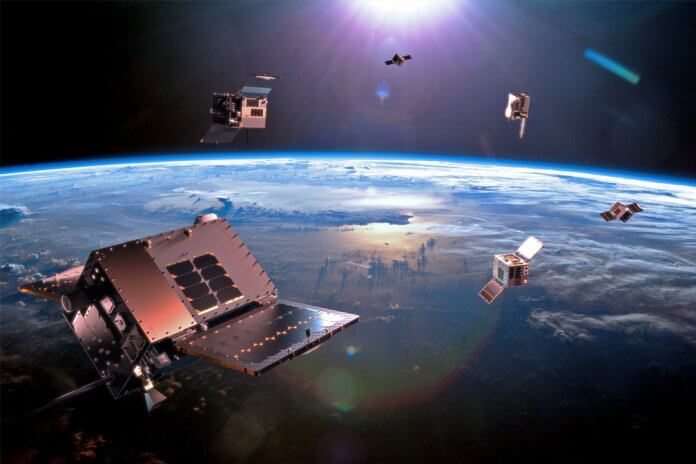
One year after launching its first three RF sensing and geolocation satellites, Hawkeye 360 is planning a major enlargement of its constellation.
Hawkeye 360 sent its original three Hawkeye-A/B/C satellites aloft on 3rd December 2019 onboard a Space-X Falcon-9 rocket launched from Vandenburg airbase, California. Known collectively as Cluster-1 these satellites detect and locate radio frequency transmissions across wavebands of 144 megahertz/MHz to 15 gigahertz.
Capabilities
The spacecraft collect a broad range of signals. These include transmissions from Very High Frequency (30 megahertz/MHz to 300MHz) radios, from marine Automatic Identification System transponders (161.975MHz to 162.025MHz), marine X-band (eight gigahertz to ten gigahertz) navigation radar and mobile satellite communications.
Multilateration
Multilateration is at the heart of the geolocation techniques used by the spacecraft. Multilateration notes the tiny differences in the time that it will take the same signal travelling at light speed (161,595k knots-per-second/299,274 kilometres-per-second) to arrive at each satellite. The spacecraft’s signal processing software notes the position of the emitter relative to each satellite, determining the emitter’s location. This information is matched with satellite imagery collected by other constellations to identify the emitter. For example, a merchant vessel in the South China Sea may have altered its AIS transponder to announce that the vessel is a large trawler sailing off the coast of east Africa. By geolocating the AIS emissions to the South China Sea and matching this with imagery intelligence of the merchant ship in this stretch of water, this claim can be disproved: A vessel transmitting false information may indicate that the ship is involved in nefarious activity.
More Clusters
According to a written statement provided by Hawkeye 360 to Armada International, Cluster-2 has improved coverage over higher frequencies which had experienced some gaps with Cluster-1: “Beyond Cluster-2 we are actively looking to further expand frequency range,” the statement continued. Other improvements conferred on Cluster-2 the ability to process multiple signals simultaneously and a doubling of the satellite’s bus power to collect and send comparatively more data back to Earth than was possible with Clustet-1. Software enhancements in the satellites’ architecture improve the geolocation accuracy of the satellite. As Cluster-2 will double the size of Hawkeye 360’s satellite fleet this will half the revisit times for any point on Earth.
Over the long term, the firm wants to continue enlarging the fleet. Plans are afoot to add nine more satellites to Clusters-1/2 providing an additional three clusters reducing revisit times. The statement continued that the existing fleet could increase to seven clusters of three allowing revisit times to fall to under once per hour. Hawkeye 360 hopes to launch Cluster-2 by the end of 2020, and to launch the next three clusters in 2021. Further launches in 2022 will realise the planned seven clusters.













